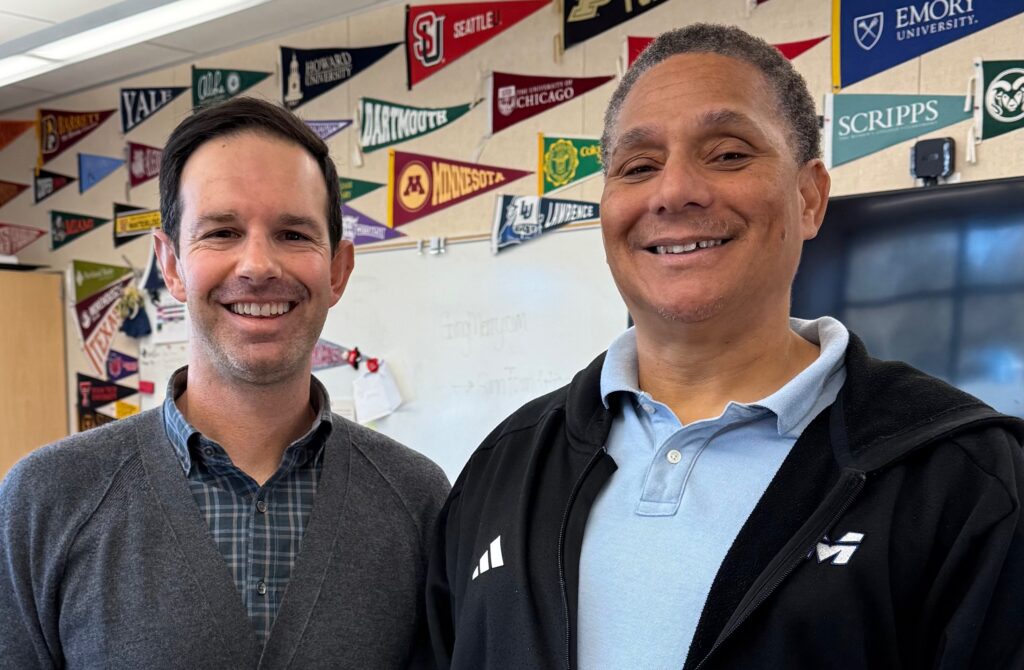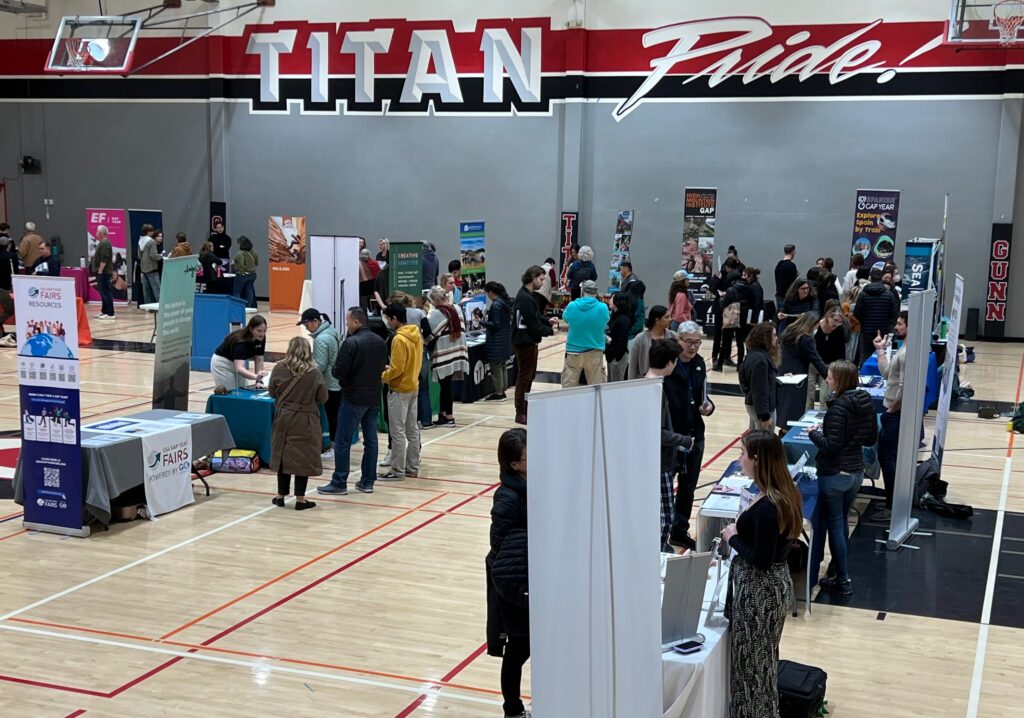The Slice – Winter 2024-25
PiE Spotlight on College and Career Counseling at Gunn and Paly
Among the many critical staff members and programs in PAUSD that are partially funded by PiE, the College and Career counselors at Gunn and Paly are essential! Gunn college counselor Jonathan Fidani and Paly college counselor Sandra Cernobori sat down with us to talk about the vital services they provide to Gunn and Paly students, as well as important current trends in college admissions.

Both counselors inherited established programs, and have tried to complement what was already in place by expanding the reach and opportunities they offer to students. They see their role as helping students to explore ALL post-secondary pathways—college, community college, the military, trade school, work force, and gap years. They work with Rachel Kaci who focuses on work experience, jobs, internships, and career-building for the entire district.
This is Jonathan’s fourth year as the college counselor at Gunn. He also works with Leighton Lang, who focuses on financial aid and college rep visits, and has a passion for underrepresented students. This is Sandra’s 19th year at Paly. She works with her college counseling peer Janet Cochrane, and College Pathways counselor Crystal Laguna, as well as with the teacher advisors at Paly, in order to develop appropriate college and career curricula.
For those interested in going to college (the majority of students at Gunn and Paly), Jonathan and Sandra see their role as helping students understand what to expect throughout the college admissions process, and providing students with tools to support them in exploring and applying to schools. The CC&C staff offer many events such as college fairs, college admissions rep visits, and gap year fairs. They’ve introduced online essay writing boot camps for rising seniors. Jonathan holds “Junior Family Nights” for juniors and their parents to attend together, and Sandra hosts a “Junior C&CC Orientation” via U.S. History classes, as well participating in 10-12th grade parent nights hosted by the Guidance department.
In addition, students have been using Naviance as their online platform for college and career-related activities for over 10 years, but this year Gunn and Paly introduced their juniors to a new user-friendly online platform called Maia Learning, which helps students make informed decisions about college and careers. It has fantastic customer service, and later this year it will be rolled out to freshman and sophomores at both schools.
Jonathan and Sandra described a few of the important trends they’ve seen recently that are impacting college admissions:
- More selective admissions – More students are applying to more schools each year, so there’s an increase in the number of applicants (international, first generation, etc.) and the number of applications per applicant. Some selective colleges have also shifted their priorities to focus more on international and historically underrepresented students. As a result the admissions rate at selective schools continues to drop each year, and more Gunn and Paly seniors are applying to public flagship universities in other parts of the country such as the midwest. More families are also being cost conscious and considering the ROI and post-college outcomes of each school before making a final decision. Also, more families are considering community college as an alternative post-secondary launching point. Our local community colleges are excellent and the TAG program (Transfer Admission Guarantee) still exists, with 6 of the 9 UCs (all UCs except UC Berkeley, UCLA, and UC San Diego) participating. As long as a community college student meets coursework and GPA requirements, they’re guaranteed admission to one of these six UCs!
- Earlier timelines – Students are applying earlier to college than ever before. 70% of Gunn and Paly students now apply early decision or early action. Timelines for recruited athletes have moved up, and out-of-state public universities are often requiring students to apply early for merit scholarships and for direct admission to certain programs. As a result of so many early applications, colleges are deferring more students than ever before.
- Understanding “Why?” – One of the hardest questions many students are continuing to struggle to answer is “Why?” Why do they want to go to college and what do they hope to get out of their college experience? Some students are very focused on being what they think colleges want them to be, when in fact the students who stand out are those who reflect deeply and reveal a unique perspective, a personal story, and a clear sense of what they want to contribute to college life.
- Affirmative Action – The Supreme Court voted to end race-conscious admissions, and the number of historically underrepresented minority students being admitted to the most selective schools has been dropping since. However, Jonathan and Sandra believe these selective colleges are committed to achieving diversity and will find other strategies besides race-based admissions to achieve that diversity.
- Legacy admissions – California has enacted legislation that will ban legacy preferences at private nonprofit colleges effective September 1, 2025. This is likely to create a more merit-based admissions system where students are evaluated primarily on their own accomplishments. Connections to familial alumni and employees will no longer play a role.
- Standardized testing continues to evolve. Many schools implemented test-optional admissions policies during COVID that have continued to this day. Some colleges however, especially highly selective colleges, have reinstated a testing requirement. The SAT has gone digital and is now shorter and adaptive. The ACT plans to follow suit in spring 2025: It will be shorter and a digital version of the test will be offered in addition to paper.
- Direct admissions is now being offered by some colleges, especially to underrepresented students, in order to simplify the admissions process, reduce stress, and improve access. This trend is likely to continue and has afforded great opportunities for some Gunn and Paly students who have been historically underrepresented.
We asked Jonathan and Sandra what advice they would offer to parents of younger students. They encouraged families not to start talking about college too early. Middle school is a time for students to build a solid foundation in math and reading, and develop some interests and passions outside of school. Have general conversations with your students on topics such as “What do we value as a family?” Once your teenager is in high school, discuss general questions about college such as “What do we think the purpose of college is?” and “What do we want your college experience to be like?” When making a college list, both parents and children should look beyond name recognition and ranking! These things might matter, but they should not drive the process. Be sure to visit a variety of college campuses once your child begins to show interest, so they can experience what it really feels like to be there, and where they feel most at home.
If it weren’t for PiE funding, the College and Career Counseling departments at Gunn and Paly would have fewer staff members—as many of our neighboring school districts do—and would not be able to accomplish nearly as much as they do. We are very fortunate in PAUSD to have PiE funding for College and Career Counseling, which enables our staff to offer wonderful opportunities and support for our students!


